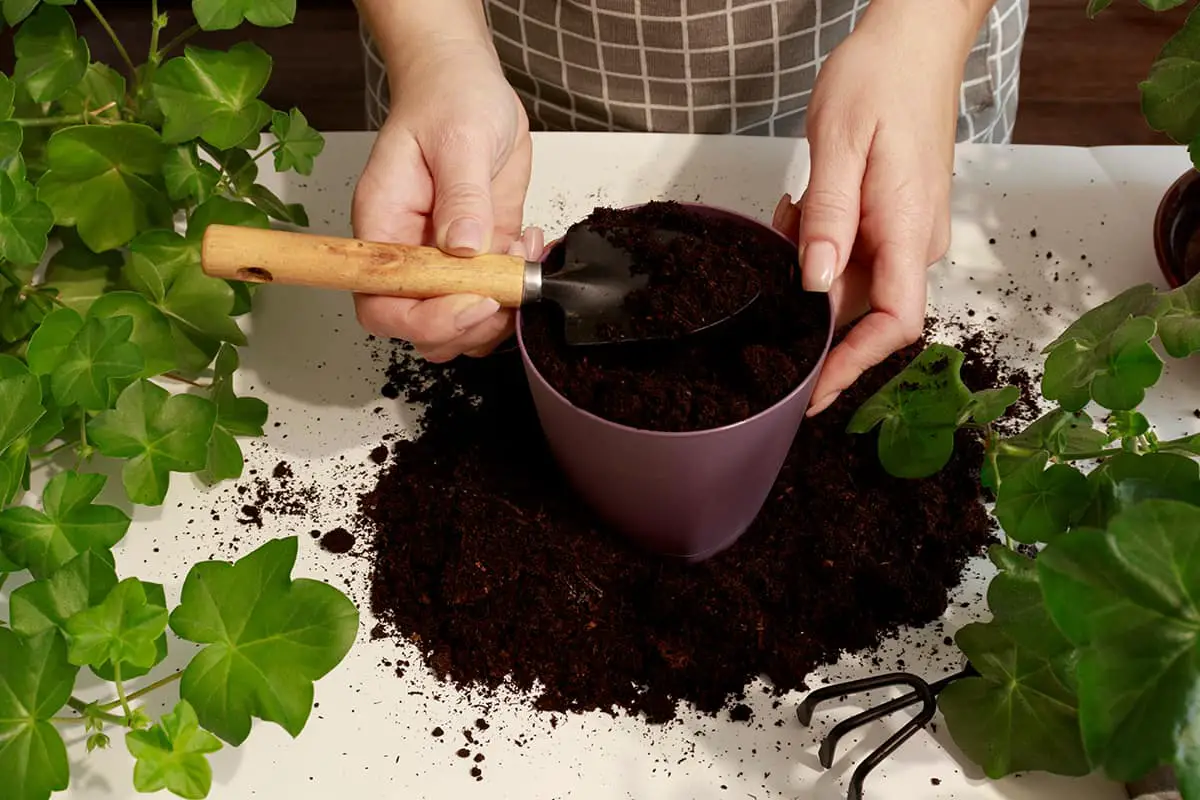Peonies are long-lived plants that typically survive for between 50 and 100 years, continuing to produce flowers throughout this time. They don’t respond well to being disturbed, so the general advice is to leave peonies in the same spot for their entire life span, however there are occasions when you will need to transplant a peony.
In this case, knowing which time of year is best for transplanting peonies can be the difference between a plant that survives, and one that doesn’t. Read on for tips on when to transplant peonies, and how to do so without damaging the plant.
Table of Contents
Should Peonies be Transplanted?

The answer to this, in most cases, is ‘no’, but of course there are often exceptions to the rule. Peonies don’t like to be moved once they are settled, and doing so unnecessarily could cause your peony to die, or at the very least your peony will struggle to produce flowers for the next few years. If your peony is thriving in its current position, then avoid moving it.
One instance where moving the peony will be beneficial to the plant is if a tall shrub or tree has grown over the peony, creating too much shade for it to effectively produce a good bloom of flowers. In this case, putting the peony through some short term stress will be worth it for the better long term health of the plant.
You might consider moving your peony if it has been in the same position for many years, and has recently started to produce fewer and fewer blooms each year. Before resorting to transplanting the peony, first try adding a fertilizer to the soil and see if this makes a difference.
It may be that the peony has depleted the soil of nutrients and requires a nutrient boost to flower. If this doesn’t help, then moving the peony might be exactly what is needed. This can happen when the peony has outgrown its space and is competing for moisture and nutrients against nearby plants, or if its root space is too restricted to expand any further.
If you want to move your peony you should be prepared to be patient. Transplanting peonies causes them stress, and they are slow to adapt to new surroundings. It is normal for a transplanted peony to not flower for the next year or two, or produce only a small number of flowers. After a few years, it should recover and be able to flower more abundantly.
Best Time to Transplant Peonies
If you have decided that you need to move your peony, then don’t jump right in and start digging up the roots. There are two times of year when you can transplant a peony and limit the damage caused to the plant, and these are September, and very early Spring. For the best chances of survival, moving the peony in September is advised.
This is when the plant will have finished flowering, and will be entering its period of dormancy over fall and winter. It will have time to gradually adapt to its new spot, ready for a growth spurt the following spring. Transplanting the peony in early spring, before any new shoots have developed, is also an option, but there is more risk of harming the plant at this time. Avoid attempting to transplant a peony at any other time of year, as it will probably cause the plant to die.
How to Transplant a Peony
In September, after cutting the stems of the plant back to ground level, dig up the peony root ball by slicing into the soil in a wide circle around the plant, and then digging a spade beneath the roots. The root ball will have a series of red-purple colored eyes, also known as buds, along with a tangle of long roots.
Try to keep as much of these intact as possible, while gently shaking the roots to remove the soil. Dig a large hole in the spot where your peony will be moved to, and set the root ball inside it, aiming to keep the eyes within the top two inches of ground level. Backfill the hole with compost or soil, and firmly press it down over the root ball.
It is essential to ensure the root ball isn’t planted too deep in the soil, as this will cause the plant to struggle to produce flowers. As the weather turns colder in late fall, add a layer of mulch to the soil over the newly transplanted peony. This will act as a layer of insulation for the roots, preventing them from going through a deep freeze, or through the repetitive process of freezing and thawing in changing temperatures over winter.
Mulching over the soil is a practice that can be helpful for peonies of any age, but it is especially recommended for young peonies or those which have recently been transplanted, as their roots will be more vulnerable to stress.
If you want to move your peony in early spring, follow the same process without mulching over the soil.
Can You Divide Peonies During Transplanting?
As peonies can get very stressed when they are moved, it is advisable to avoid dividing them. However, if you are transplanting the peony anyway, then it can make sense to divide it at the same time. If your root ball has six or more eyes or buds, then it is suitable for division.
Carefully cut the root ball in half, with a minimum of three eyes remaining on each side. These can now be replanted as two separate peony plants. Dividing the peonies can help to give them a new burst of energy, encouraging more vigorous growth and more abundant blooming, however it carries the risk of stressing the plant.
When peonies have been divided or transplanted, they will struggle to bloom for the next few years, but once they have adapted well to their new surroundings they will enjoy a new lease of life.






